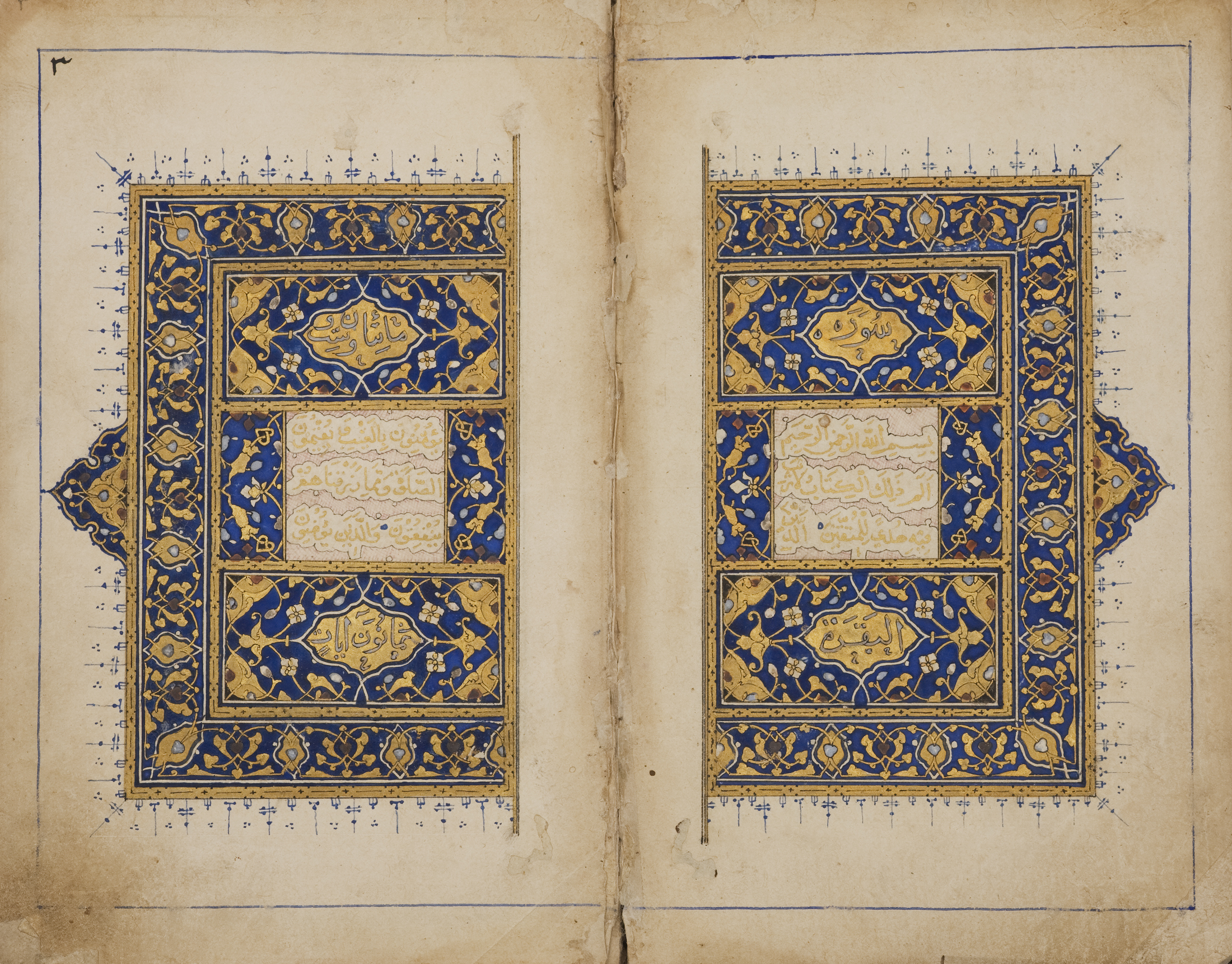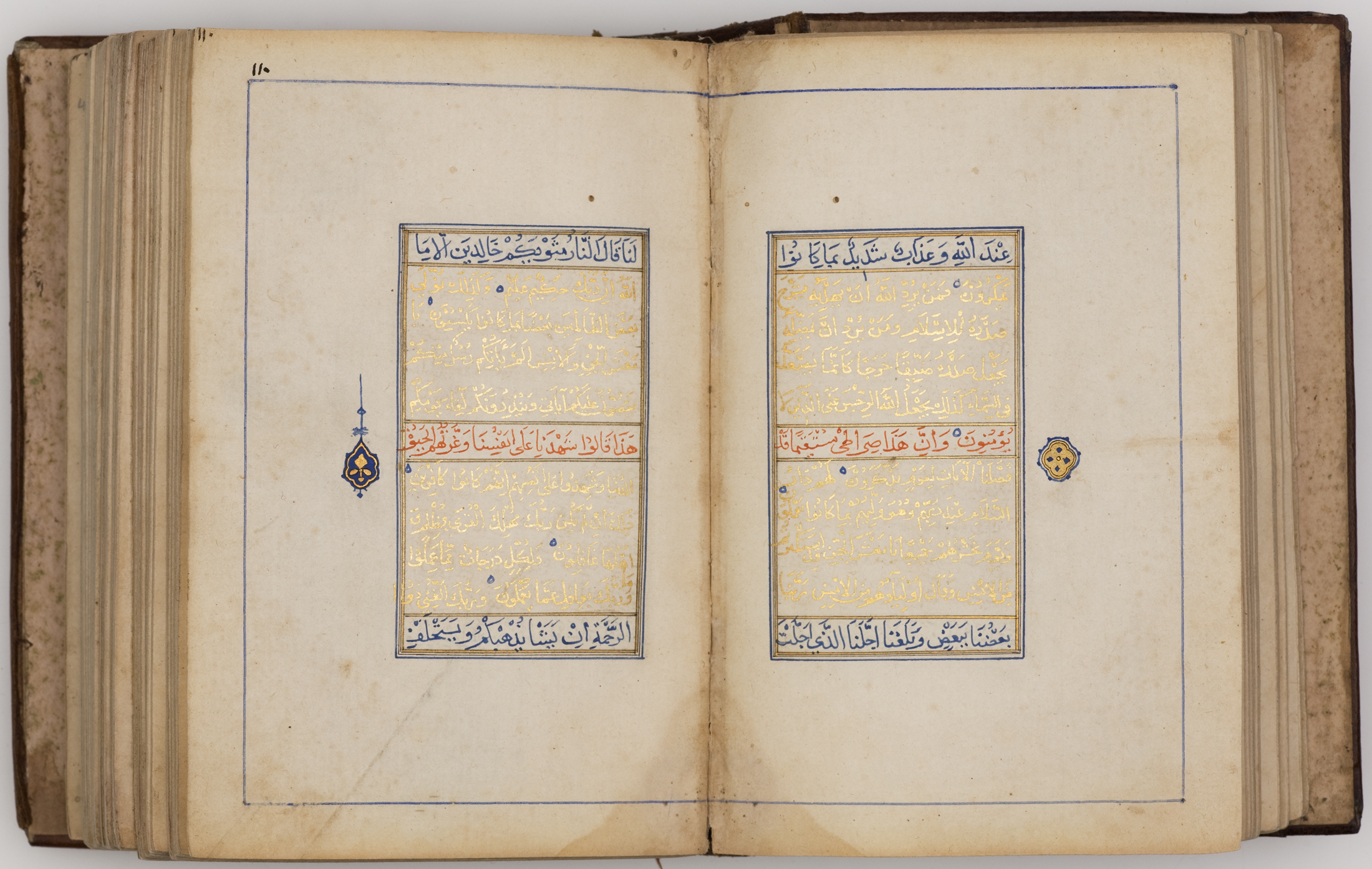 Print Page
Print Page
 Print Page
Print Page
Location: India, probably Saray-i Amanat Khan
Materials: ink, gold and opaque watercolour on paper; bound in brown morocco covers with stamped medallions, probably contemporary; doublures of gold-flecked paper
Dimensions: 512 folios; 13.9 x 9cm
Accession Number: QUR 614
Other Notes:
The scribe of this Qur’an was ‘Abd al-Haqq Amanat Khan Shirazi, who was born in Shiraz but at an early age migrated to the Mughal court, where he rapidly achieved high rank. He was particularly famous as a calligrapher and designed the inscriptions for the Taj Mahal at Agra (completion dates 1046 AH/1637–8 AD and 1048 AH/1638–9 AD), the tomb of Shah Jahan’s beloved wife, Mumtaz Mahal. He subsequently retired to a village near Lahore, where he built a great caravanserai, the Saray-i Amanat Khan, where this Qur’an was evidently written.
Script:
copied in naskh script; 11 lines to the page
Bibliography:
M. Bayani, A. Contadini & T. Stanley, The Decorated Word. Qur’ans of the 17th to 19th Centuries, The Nasser D. Khalili Collection of Islamic Art, volume IV, Part One, London 1999, cat.58, pp.178– 82.
J.M. Rogers, The Arts of Islam. Masterpieces from the Khalili Collection, London 2010, cat.257, pp.222–3.

